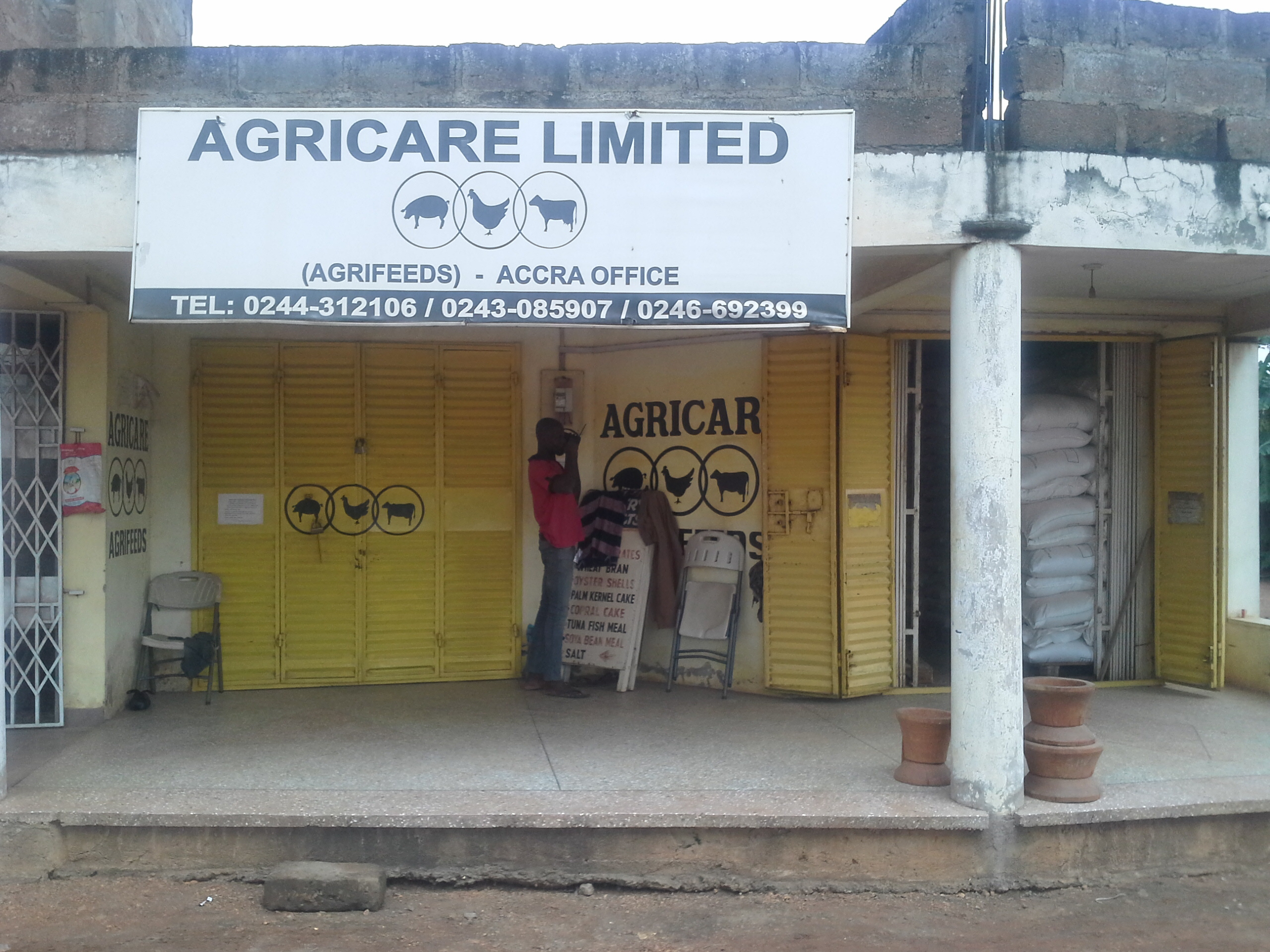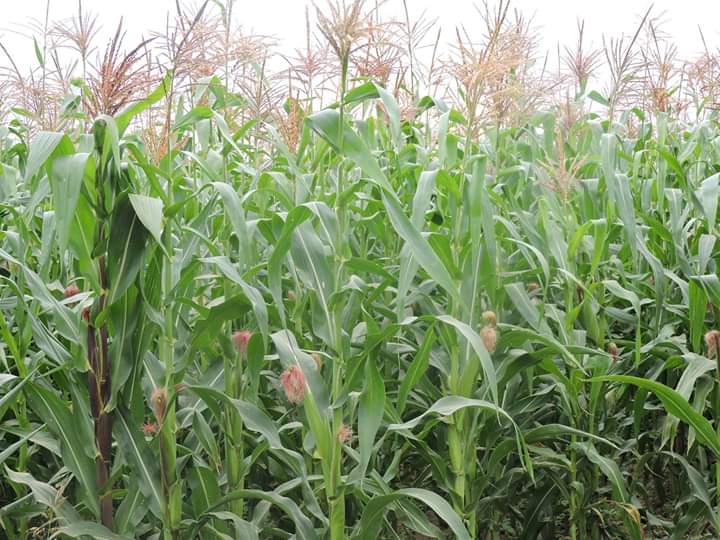



Africa's pig farmers confront the challenge of costly feed
Government support, training and research is allowing pig producers in Ghana to overcome feed price difficulties.Due to the high cost and often erratic supply of maize and soya – the main ingredients used in pig, poultry and pig farming – pig farmers in Ghana and many African countries produce their feed on-farm, using alternatives. Many use substitute ingredients that have been shown to be viable replacements, such as maize and soya meal, but this has often not achieved the best results.
Apart from the fact that much of the feed is produced in conditions that fail to meet minimal biosecurity standards, not much regard is paid to the nutritional components of these ingredients. Moreover, although many African universities and research agencies have recommended these alternatives as viable substitutes, they also recommend the use of biochemical treatments to deal with anti-nutritional factors*, which limit the replacement ingredients’ effectiveness. As a result, as they move from micro-level production to larger operations, more pig farmers in Ghana have been choosing commercial feed, even though they complain that the prices are very high.
Responding to the growing needs of the market, feed producers who had previously concentrated on poultry feed production have started producing “direct supply” pig feed. Officials from Agricare, formerly a subsidiary of US-based Pfizer, and the Ghana Agro Food Company told Efua Okai that while they are not putting pig feed on the shelves, they are interacting with the pig farmers, and are always ready to respond to their specific needs. Charles Blebo, marketing manager at Agricare, says that “pig farming is growing, and the farmers are appreciating the importance of quality feed to efficiency and bigger profit. We are always ready to give them the required assistance.”

© Efua Konyim Okai
At many livestock feed shops in Ghana’s towns and cities, pig feed is only available on demand. “We take orders from pig farmers, and we deliver their orders to their doorsteps,” says Kingsley Appiah, a feed dealer in Aburi, a town a few miles to the north of Accra.
“Our suppliers are in direct touch with the farmers. They also work with their associations and cooperatives.”
The increasing use of commercial feed is a reflection of the trend in Ghana of pig farmers moving beyond traditional micro-operations, where individuals would keep a few animals around their backyard, feeding them with kitchen and other food wastes and employing family members as staff. There is an increasing awareness of the viability of pig farming as a business, thanks to training programmes becoming more widely available. For instance, the pig farmers’ association, the Progressive Pig Farmers Network, periodically runs well-attended courses to update the skills of its members. The Animal Research Institute, meanwhile, through its CCLEAr and entrepreneurship incubator programmes, has trained scores of graduates who are presently running their own pig farms. The Faculty of Animal Sciences of the Kwame Nkrumah University of Science organises workshops to pass on technical skills to farmers. And the Council for Vocational and Technical Training (COTVET) sponsors training workshops for pig farmers’ cooperatives, at which new skills are imparted.
Maize and soya meal
Major efforts are being made by African governments to maximise maize and soya meal production in order to reverse the high cost of pig, poultry and fish feeds, but they face challenges. Demand for maize is always very high, due to the fact that in addition to being a livestock feed ingredient, it is the main African food ingredient and a raw material in the brewery and pharmaceutical industries. Last year, the invasion of army worm – a virulent American pest that has been devastating agriculture across the African continent since it appeared in Nigeria in 2016 – destroyed a sizeable part of the African maize crop.
There are also post-harvest problems which affect the quality of maize used in feed production. In Africa, maize is produced by small farmers who dry their harvest in the sun before it is delivered to the market, leaving it prone to aflatoxin infestation. Recognising the seriousness of aflatoxin infestation in maize and other crops, African governments are involved in a number of projects aimed at dealing with this problem. The Ibadan (Nigeria) based International Institute for Tropical Agriculture has produced Aflasafe 2, a product that gives protection from aflatoxin when applied to maize, groundnut or other plants.

© Efua Konyim Okai
Soya meal, the main protein ingredient used in African pig, poultry and fish diets, is imported, and in a region that is facing hard currency challenges, this is a major contributor to the high (70 percent) proportion taken up by feed in the farmer’s budget.
Among the alternatives which are regularly used by pig farmers are palm kernel cake, coconut cake and cocoa pod husk. These agro byproducts are quite cheap, and have few competing demands. But they will only be fully efficient in livestock production when the anti-nutritional factors* are dealt with.
Ronnie Sackey, a farming consultant, believes that the use of commercial feed is more than rewarded with high-quality products. “Some pig farmers are complaining that commercial feed is expensive,” he says. “But the simple truth is that they do not know all the technical details regarding feed production, and they do not have the bio-safety facilities for producing good-quality feed. It is instructive that discerning pig farmers are now opting for commercial feed, because they understand that it translates into good-quality pigs in real time, and big profits.”
He suggests that African countries should encourage major international feed producers to invest in livestock feed production based on alternative feed resources. “They have the experience and the resources to neutralise the anti-nutritional factors*, and to make money out of these feed resources which presently have little commercial value.”
Yemi Adesina, a Nigerian pig farmer and training consultant who runs training workshops for farmers in West Africa, believes that high-quality feed has obvious advantages. The texture of the feed is also a factor that affects efficiency. “Pelletised feed,” he says, “increases feed consumption and digestion by 25 percent,” which has obvious implications for growth and quality. He says that with the provision of good-quality feed, the farmer can achieve 1kg growth per day, and reach 100kg in five months.
Adesina adds that the genetic composition of a pig contributes 35 percent towards its performance, and suggests that African research agencies should increase their efforts to develop pig breeds that are tolerant of the local environment, feed and other factors.
In addition to feed and environmental considerations, African pig farmers would be wise to look at the suitability of current breeds in relation to the market for lard production. Lard production is becoming increasingly profitable in Nigeria, and many farmers in other African countries are expected to follow this trend.
*Anti-nutritional factors reduce the nutrient utilisation and/or food intake of plants or plant products used as human foods or animal feeds and they play a vital role in determining the use of plants for humans and animals. (Emire et al., 2013.)
| References | ||||
|---|---|---|---|---|
| Emire, S.A., Jha, Y.K. and Mekam, F. | ||||
| (2013) | Role of anti-nutritional factors in food industry. Beverage and Food World, 1, pp.23-28. |









